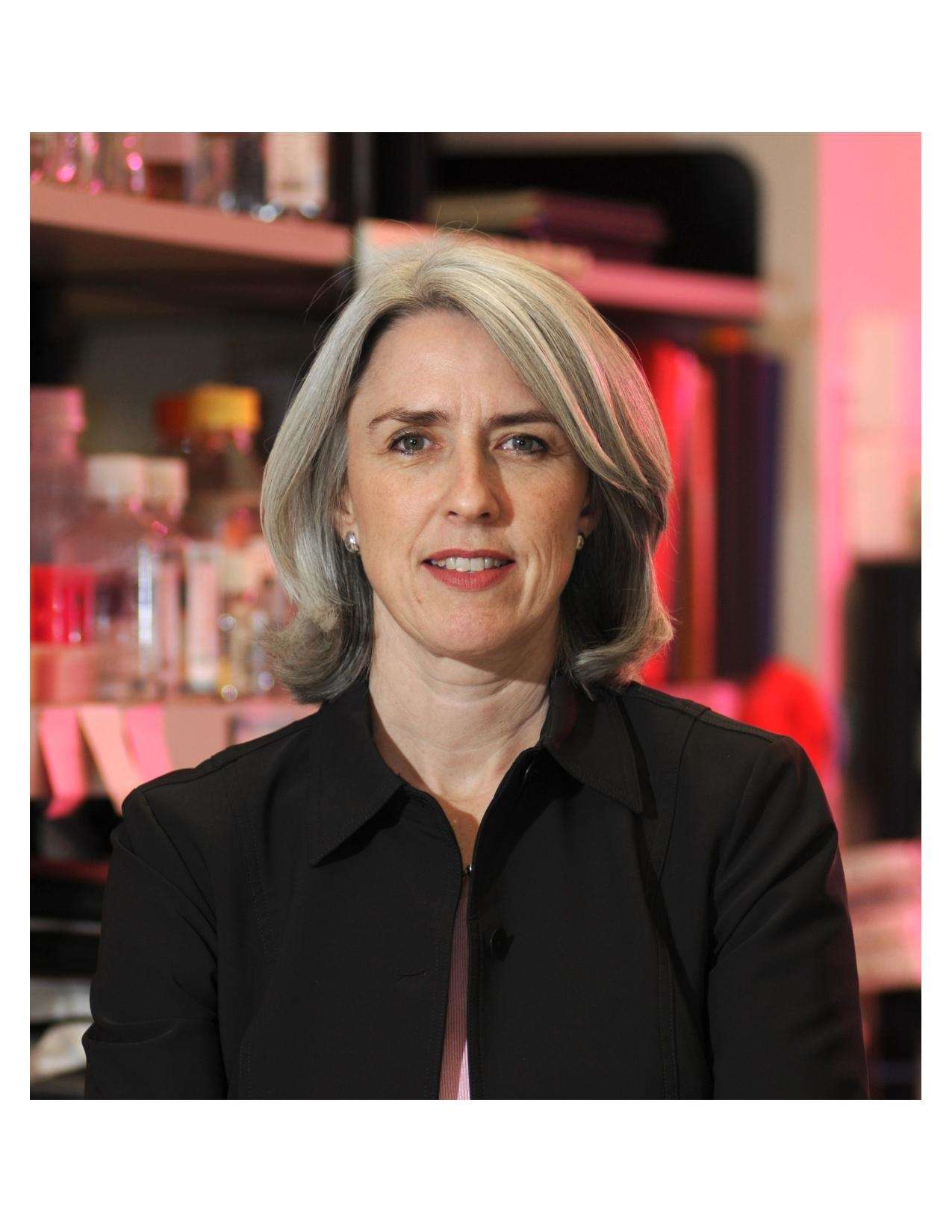Margaret Goodell

Dr. Margaret (“Peggy”) A. Goodell (born March 23, 1965) is an American scientist working in the field of stem cell research. Goodell is Professor at Baylor College of Medicine and Director of the Stem Cell and Regenerative Medicine (STaR) Center.[1] She is best known for her discovery of a novel method to isolate adult stem cells.[2]
Goodell has been on the faculty of Baylor College of Medicine since 1997 as a member of the Center for Cell and Gene Therapy, and the Departments of Pediatrics, Molecular and Human Genetic, and Immunology.[3] She holds the Vivian L. Smith Chair in Regenerative Medicine, and has received numerous awards for excellence in teaching and research.[4]
Goodell is the President of the International Society for Experimental Hematology,[5] and has served on the board of the International Society for Stem Cell Research. She has also served as the chair of the Stem Cells and Regenerative Medicine committee for the American Society of Hematology. She is an Associate Editor for Blood.[6][7]
Education
Goodell is the daughter of Joe Goodell, former CEO of American Brass Company. She grew up in Bryan, Ohio with her sisters Marian (a founding board member of the Burning Man[8] Project and the Director of Business and Communications for Black Rock City, LLC), Martha (a management consultant) and Melly (a physician).[9][10] She is the niece of Grace Goodell, professor of International Development at The Johns Hopkins School of Advanced International Studies [11]
Goodell attended Wesleyan University before receiving her B.Sc. at Imperial College of Science and Technology in London, England in 1986 with Honors. She went on to earn her Ph.D. at University of Cambridge in 1991. She completed postdoctoral fellowships at the Whitehead Institute for Biomedical Research at Massachusetts Institute of Technology and Harvard Medical School under the mentorship of Richard Mulligan.[12]
At MIT, she developed a method for isolating blood-forming stem cells from mouse bone marrow based on a fortuitous observation that stem cells efflux fluorescent lipophillic dyes. This “side population (SP)” method has become widely used to isolate stem cells from a variety of species and adult tissues, including from cancer stem cells.
Career
In 1997, Goodell joined the faculty of the Department of Pediatrics, Molecular and Human Genetics, and Immunology at Baylor College of Medicine in Houston, Texas. She is also a member of the Center for Cell and Gene Therapy. She is also a founding member and the director of the Stem Cell and Regenerative Medicine (STaR) Center.
Her current research is focused on the mechanisms that regulate hematopoietic stem cells (HSC), and how those regulatory mechanisms go awry in hematologic malignancies. The Goodell Laboratory, which has about 15 students and post-doctoral fellows, studies the effects of stresses, including infection, toxicity and age, on the behavior of HSCs. The lab also looks at stem cell growth control, as well as the regulation of self-renewal and activation.
More than 75 of her peer-reviewed primary research papers have been published in journals including Nature and Blood.[13][14][15][16]
Awards and honors
She received the DeBakey Award for Excellence in Research in 2004 and 2010, the Stohlman Scholar Award from the Leukemia and Lymphoma Society in 2006, the American Heart Association’s Established Investigator Award from the year 2006 to 2011, the Edith and Peter O’Donnell Award in Medicine in 2011, and the Damashek Prize from the American Society of Hematology in 2012, as well as numerous recognitions for her teaching and mentorship. She had mentored more than doctoral students and post-doctoral fellows, many of whom have gone on to careers in academia.
References
- ↑ Baylor College of Medicine, ref. July 14, 2014
- ↑ American Society of Hematology, "ASH honors Margaret A. Goodell," Claire Gwayi-Chore
- ↑ Baylor College of Medicine, ref. July 14, 2014
- ↑ The Academy of Medicine, Engineering and Science of Texas
- ↑ Society for Hematology and Stem Cells, Leadership, ref. July 14, 2014
- ↑ Blood, ref. July 14, 2014
- ↑ https://www.youtube.com/watch?v=vLGtjimtDHA
- ↑ Burning Man
- ↑ https://www.mediawiki.org/wiki/Melly_goodell%5B%5D
- ↑ http://www.livingprimetime.com/AllCovers/Mar1998/maestro_of_business.htm
- ↑ Grace Goodell
- ↑ Goodell, M. A., Brose, K., Paradis, G., Conner, A. S., and R. C. Mulligan (1996) Isolation and functional properties of murine hematopoietic stem cells that are replicating in vivo. J. Exp. Med. 183: 1797-1806
- ↑ Yang L, Rau R, Goodell MA. "DNMT3A in haematological malignancies." Nat Rev Cancer. 2015 March:152-65. Pubmed PMID: 25693834
- ↑ Challen GA, Sun D, Mayle A, Jeong M, Luo M, Rodriguez B, Mallaney C, Celik H, Yang L, Xia Z, Cullen S, Berg J, Zheng Y, Darlington GJ, Li W, Goodell MA. "Dnmt3a and Dnmt3b have Overlapping and Distinct Functions in Hematopoietic Stem Cells." Cell Stem Cell. 2014 September 4;15(3):350-64. Pubmed PMID: 25130491
- ↑ Jeong M, Sun D, Luo M, Huang Y, Challen GA, Rodriguez B, Zhang X, Chavez L, Wang H, Hannah R, Kim SB, Yang L, Ko M, Chen R, Göttgens B, Lee JS, Gunaratne P, Godley LA, Darlington GJ, Rao A, Li W, Goodell MA. "Large conserved domains of low DNA methylation maintained by Dnmt3a." Nat Genet. 2014 January;46(1):17-23. Pubmed PMID: 24270360
- ↑ Baldridge, M. T., K. Y. King, N. C. Boles, D. C. Weksberg and M. A. Goodell (2010). Quiescent hematopoietic stem cells are activated by IFNγ in response to chronic infection. Nature.